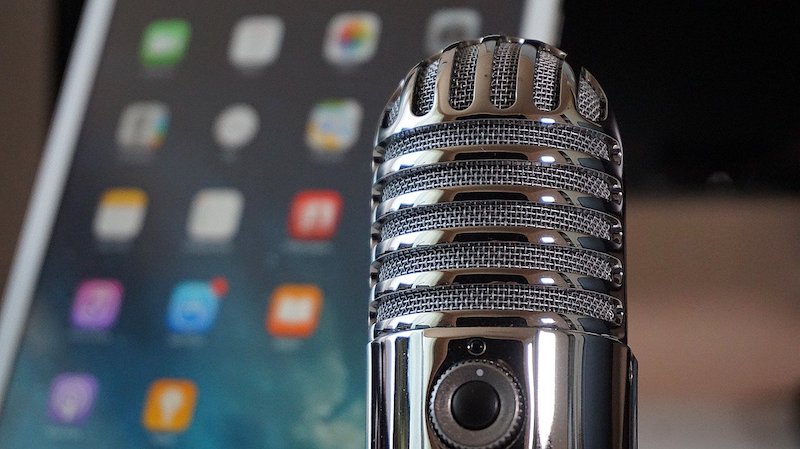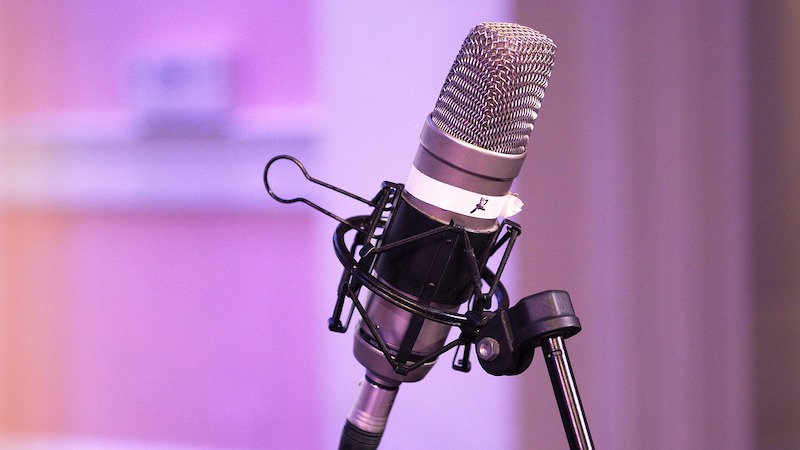The video editor for podcasters Get unlimited 15-second videos for free
Advertising for Podcasts: How to Make Money with Your Podcast
Podcast advertising is a clever way to monetize your podcast. In this guide, we will look at different ad formats and payment models available for podcasts and give you tips on how to find sponsors for your podcast.
In addition to being very popular, podcasts can also generate a lot of money, especially through advertising. This might seem surprising since users normally do everything they can to avoid ads online; they close pop-up ads as quickly as possible, they scroll past embedded ads, and many use ad blockers so they won’t have to deal with any advertisements at all. However, in the world of podcasts, things function differently.
Podcast listeners have unusually high engagement and attention spans. 93% of listeners will get through the majority of any podcast episode they ever start, and they also pay attention to the ads! One study found that 72% of people who have listened to a podcast for at least four years end up buying at least one thing that has been advertised on the podcast.
Advertisers are very aware of these trends. A recent survey showed that advertisers were ready to spend 500 million dollars on podcast ads in 2020.
So, if you are thinking about monetizing your podcast, it might be worth looking into advertising. Understanding the different types of ads for podcasts as well as the different payment models will help you decide on the most beneficial ad formats, and pick the best monetizing model for your podcast.
In the following, we will therefore look at the most common ad formats and payment models available for podcasts and give you tips on finding sponsors for your podcast.
Ad formats for podcasts
Usually, you and your sponsor—the company that runs ads on your podcast—will decide on the best type of ads together. However, as a host you know your audience the best, and can guide your sponsors as to what ad format might perform better on your podcast.
Obviously, as you get a cut from the ad earnings your sponsor makes on your podcast, it’s in your best interest to pick the best possible ad format for your podcast. So the more you know about podcast ads, the better.
When it comes to podcast ads, there are several different formats. The most common ones are:
- Baked-in ads: Ads which are pre-planned and inserted into the podcast before the episode airs. Baked-in ads can either be pre-produced and later inserted into the episode, or they can be live-read by the host as the episode is being recorded.
- Dynamic ads: Pre-produced ads that are chosen by a server-run algorithm to best fit the individual listener.
Baked-in ads
Baked-in ads are ads that are pre-planned. The most common baked-in ads are the ones that are pre-produced by the sponsor and then sent to the podcast host to be inserted into the episode after it has been recorded. These ads usually have excellent production values, so they sound great.
The downside is that they also sound like typical ads, which might be off-putting to some listeners. In order to avoid this, some sponsors might choose to have show hosts produce their ads for them. In this case, you record the ad and insert it into your podcast episode during the editing process.
A third option could be to have the host live-read the ads. Live-read ads are not pre-produced, and usually they are scripted either. Instead, a host will choose the best time in the podcast episode to talk about a product spontaneously. Live-read ads are the most organic type of ads, however they also the hardest to deliver for a host, so consider carefully whether you are up for the task.
Dynamic ads
Dynamic ads are also pre-produced by the sponsor. However, unlike baked-in ads, they are not pre-inserted into the episode or read while recording the episode. Instead, a server decides which ads to play for each podcast listener, as they are listening to an episode.
A smart algorithm decides which ads to run, depending on different factors such as the time of year or the type of listener. For example, in December, the server might choose to run a winter-themed ad rather than an ad promoting a summer product.
Dynamic ads are more flexible and more personalized, so they are a good choice for businesses running time-sensitive campaigns, or if your podcast has a diverse audience and a business wants to best target each listener.
There are no set rules about which ad format works best; it usually depends on the type of podcast and the audience. You might also decide to use different formats for different episodes or different sponsors.
What is the best placement for podcast ads?
Aside from choosing ad formats, you also need to think about the best placement for the ads in your episodes. The most common ad placements are pre-roll, mid-roll, and post-roll.
Pre-roll ads
Pre-roll means that you run an ad before the episode starts, at the very beginning. This ensures that the vast majority of your listeners will hear the ad, and it’s also the time when your audience is the most perceptive, since they have just tuned in.
However, it might be off-putting for some listeners if the first thing they hear is an ad. Some podcast hosts therefore choose to start their episodes with a short teaser to pique listeners’ interest, and then they play the pre-roll ads.
Mid-roll ads
Another option is to insert the ad mid-roll. In the middle of an episode, users are usually engaged with the content and very likely to both listen to the ad and finish the episode.
The downside of mid-roll ads is that you can’t be sure that listeners will make it this far into the episode, so you might not reach as many people as you would with a pre-roll ad.
Post-roll ads
The third most common ad placement is post-roll, after the end of the episode. While you might reach the least amount of people with post-roll ads, it is also the least disturbing ad placement in regard to the listener experience.
Typically, post-roll ads are read by the host, so they still sound like they are still part of the episode, and they most commonly include a teaser for the next episode or for other podcasts.
All ad placements have their advantages and disadvantages, so experiment with different ad placements to see what works best for your podcast.
Keep in mind that if you choose to run dynamic ads, you don’t have to think about ad placement at all; the server algorithm decides at what point to play the ads that each user hears.
Choose a payment model for your podcast ads
Regardless of which ad format you decide to run, you will also have to choose a payment model. The two most common pricing models are CPM (cost per mille) and CPA (cost per acquisition).
- CPM: Your sponsor will pay a fixed price for every thousand downloads of your podcast, views of your video podcast, or social media impressions, such as likes, views or shares, depending on the type of podcast and agreement you have. For example, one standard deal could be to get paid 50 dollars per every thousand downloads of an episode. CPM is a worthwhile payment model if you have many listeners.
- CPA: In this case, the sponsor monitors a certain type of conversion and pays you a fixed price per conversion. For example, you might get paid 100 dollars for every purchase resulting from an ad which is run on your podcast. If you have a smaller but engaged audience, this might be a better payment model than CPM.
How to convince sponsors to run ads on your podcast
Now that you know what ad options you have for your podcast and how the most common payment models work: How do you find sponsors?
The first step is to make sure to create an engaging podcast with a faithful listener base. Second, figure out who your target audience is. After all, sponsors want to know that they will actually reach potential customers with their podcast ads.
Prepare a presentation for potential sponsors with key metrics about your podcast. In your pitch, tell a potential sponsor what your podcast is about, introduce your team, and talk about your target audience and number of listeners, but also emphasize how their brand would benefit from running ads on your podcast.
Go the extra mile to show companies how they would be featured on your podcast. For example, you can create an audiogram with their logo. As catchy, short video clips, audiograms are meant to get viewers’ attention, and they will most likely have a positive impact on a potential sponsor’s reply to your ad request. Use free software such as Audiocado to create professional looking audiograms that will make your presentation stand out.


